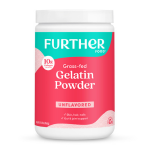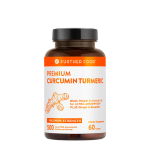 SALMON
Diabetics are at high risk for developing heart disease, due to a process known as glycation in which sugars react with proteins. In fact, this process accelerates atherosclerosis as it promotes the buildup of lipids in blood vessels and eventually leads to a decrease in blood circulation.
Salmon is a diabetic powerhouse serving as an excellent source of omega-3 fatty acids, which decrease triglycerides and blood pressure, and slows the hardening of arteries by raising levels of “good” HDL cholesterol and decreasing levels of “bad” LDL cholesterol. With zero carbs, there’s no worry about a spike in sugar levels. In fact, salmon improves insulin sensitivity, making it a must in any diabetic’s meal plan.
The American Diabetic Association recommends consuming seafood at least twice a week. A study from the Journal of the American Medical Association reported eating wild seafood at least twice a week can reduce the risk of heart disease by at least 36% and give you more energy to power through your day.
Bake or sauté salmon for lunch or dinner instead of chicken, or add canned salmon to salads, soups or omelets!
Try out these diabetes-friendly salmon recipes!
No Yolk Poached Egg and Salmon Benedict
Wild Salmon Bacon Burgers
SALMON
Diabetics are at high risk for developing heart disease, due to a process known as glycation in which sugars react with proteins. In fact, this process accelerates atherosclerosis as it promotes the buildup of lipids in blood vessels and eventually leads to a decrease in blood circulation.
Salmon is a diabetic powerhouse serving as an excellent source of omega-3 fatty acids, which decrease triglycerides and blood pressure, and slows the hardening of arteries by raising levels of “good” HDL cholesterol and decreasing levels of “bad” LDL cholesterol. With zero carbs, there’s no worry about a spike in sugar levels. In fact, salmon improves insulin sensitivity, making it a must in any diabetic’s meal plan.
The American Diabetic Association recommends consuming seafood at least twice a week. A study from the Journal of the American Medical Association reported eating wild seafood at least twice a week can reduce the risk of heart disease by at least 36% and give you more energy to power through your day.
Bake or sauté salmon for lunch or dinner instead of chicken, or add canned salmon to salads, soups or omelets!
Try out these diabetes-friendly salmon recipes!
No Yolk Poached Egg and Salmon Benedict
Wild Salmon Bacon Burgers
 Easy Himalayan Sea Salt Salmon
BERRIES
Do you enjoy blueberries, strawberries, raspberries or any kind of berry? Quick! Pack some into your diet. Berries are packed with antioxidants, vitamins and fiber. Low on the glycemic index, these high fiber foods help keep blood sugar levels stable, aid in weight loss due to their bulk fiber content, and help lower both cholesterol and blood pressure. A study in the American Journal of Clinical Nutrition found that people with heart disease risk factors who ate berries for eight weeks experienced a drop in blood pressure and a boost in “good” HDL cholesterol.
Sprinkle them onto oatmeal, cereal, or even salads as a nutritious and fibrous sweetener. Even if you choose to snack on them alone, be sure to include this superfood in your meal plan!
Try out these diabetes-friendly berry recipes!
Strawberry Corn Muffins
Power Protein Pitaya Smoothie
Easy Himalayan Sea Salt Salmon
BERRIES
Do you enjoy blueberries, strawberries, raspberries or any kind of berry? Quick! Pack some into your diet. Berries are packed with antioxidants, vitamins and fiber. Low on the glycemic index, these high fiber foods help keep blood sugar levels stable, aid in weight loss due to their bulk fiber content, and help lower both cholesterol and blood pressure. A study in the American Journal of Clinical Nutrition found that people with heart disease risk factors who ate berries for eight weeks experienced a drop in blood pressure and a boost in “good” HDL cholesterol.
Sprinkle them onto oatmeal, cereal, or even salads as a nutritious and fibrous sweetener. Even if you choose to snack on them alone, be sure to include this superfood in your meal plan!
Try out these diabetes-friendly berry recipes!
Strawberry Corn Muffins
Power Protein Pitaya Smoothie
 Blueberry Maca Smoothie
KALE
You’ve probably noticed experts going crazy advocating for kale — and it’s for good reason. This popular green is low in calories and carbs yet so incredibly nutritious that it’s a must for any diabetic diet.
Kale contains an antioxidant known as alpha-lipoic acid, which has been shown to lower blood glucose levels, increase insulin sensitivity and prevent oxidative stress-induced changes in patients with diabetes. With only 33 calories, one cup of raw kale provides 204% of your daily requirement for vitamin A, 134% of your vitamin C requirement, and 684% of your recommended intake of vitamin K. Not to mention its high protein and fiber content, which help keep you feeling full, thus maintaining a healthy weight.
Use kale in entrees, salads, smoothies, soups, sandwiches, omelets, etc. Don’t like it raw? Go ahead and steam, sauté or stir-fry this veggie to suit your needs. In fact, cooked kale contains a special cholesterol-lowering fiber that binds to bile acids in your body and essentially gets rid of fat and cholesterol, making sure they don’t get absorbed.
Try out these diabetes-friendly kale recipes!
Kale Chips
Blueberry Maca Smoothie
KALE
You’ve probably noticed experts going crazy advocating for kale — and it’s for good reason. This popular green is low in calories and carbs yet so incredibly nutritious that it’s a must for any diabetic diet.
Kale contains an antioxidant known as alpha-lipoic acid, which has been shown to lower blood glucose levels, increase insulin sensitivity and prevent oxidative stress-induced changes in patients with diabetes. With only 33 calories, one cup of raw kale provides 204% of your daily requirement for vitamin A, 134% of your vitamin C requirement, and 684% of your recommended intake of vitamin K. Not to mention its high protein and fiber content, which help keep you feeling full, thus maintaining a healthy weight.
Use kale in entrees, salads, smoothies, soups, sandwiches, omelets, etc. Don’t like it raw? Go ahead and steam, sauté or stir-fry this veggie to suit your needs. In fact, cooked kale contains a special cholesterol-lowering fiber that binds to bile acids in your body and essentially gets rid of fat and cholesterol, making sure they don’t get absorbed.
Try out these diabetes-friendly kale recipes!
Kale Chips
 Red Cabbage and Baby Kale Coleslaw with Ginger Lime Dressing
5-Minute Spicy Tangy Kale Salad
DARK CHOCOLATE
Yes, while it’s true that chocolate has fat and calories, the health benefits cannot go unnoticed! Dark chocolate is actually loaded with nutrients, contains a decent amount of soluble fiber and is also a phenomenal source of antioxidants.
Due to its high flavanol content, researchers have discovered that health benefits of dark chocolate include significantly improved markers of insulin sensitivity, decreased fasting glucose levels, and decreased blood pressure due to the effects of nitric oxide.
Look for high quality dark chocolate bars that contain 70% cocoa or more, which are usually sold in health-food/organic/grocery stores. Remember, dark chocolate is not “off limits” if you consume it in moderation. A square of dark chocolate is diabetic-friendly and a perfect way to satisfy your sweet tooth for the day.
Try out these diabetes-friendly dark chocolate recipes!
Dark Chocolate Candied Walnut Clusters
Superfood High Protein Cacao Bites
Red Cabbage and Baby Kale Coleslaw with Ginger Lime Dressing
5-Minute Spicy Tangy Kale Salad
DARK CHOCOLATE
Yes, while it’s true that chocolate has fat and calories, the health benefits cannot go unnoticed! Dark chocolate is actually loaded with nutrients, contains a decent amount of soluble fiber and is also a phenomenal source of antioxidants.
Due to its high flavanol content, researchers have discovered that health benefits of dark chocolate include significantly improved markers of insulin sensitivity, decreased fasting glucose levels, and decreased blood pressure due to the effects of nitric oxide.
Look for high quality dark chocolate bars that contain 70% cocoa or more, which are usually sold in health-food/organic/grocery stores. Remember, dark chocolate is not “off limits” if you consume it in moderation. A square of dark chocolate is diabetic-friendly and a perfect way to satisfy your sweet tooth for the day.
Try out these diabetes-friendly dark chocolate recipes!
Dark Chocolate Candied Walnut Clusters
Superfood High Protein Cacao Bites
 Dark Chocolate Peanut Butter Balls
BROCCOLI
Anti-inflammatory therapeutic approaches are considered to be important in management of type 2 diabetes and prevention of its complications, which makes broccoli a wondrous vegetable for diabetics.
Research has shown that powder derived from broccoli sprouts has favorable effects on inflammatory markers in type 2 diabetic patients. Why? It contains sulforaphane, which functions to mediate inflammation, attenuates oxidative stress, and contributes to lipid metabolism and glucose homeostasis. Sulforaphane stimulates production of enzymes that protect blood vessels and reduce oxidative damage to cells. This is important since diabetics are much more likely to develop cardiovascular complications such as heart attacks or strokes — both of which are linked to damaged blood vessels.
Broccoli also contains five grams of fiber for a ½ cup serving, amounting to only 50 calories, making it a perfect addition to any meal for individuals who are trying to maintain a healthy weight. So remember to add some broccoli to your next salad for lunch or stir-fry it for dinner!
Try out these diabetes-friendly broccoli recipes!
Broccoli & Asparagus Soup with Coconut Milk
Lemon Pepper Gnocchi with Broccoli
Dark Chocolate Peanut Butter Balls
BROCCOLI
Anti-inflammatory therapeutic approaches are considered to be important in management of type 2 diabetes and prevention of its complications, which makes broccoli a wondrous vegetable for diabetics.
Research has shown that powder derived from broccoli sprouts has favorable effects on inflammatory markers in type 2 diabetic patients. Why? It contains sulforaphane, which functions to mediate inflammation, attenuates oxidative stress, and contributes to lipid metabolism and glucose homeostasis. Sulforaphane stimulates production of enzymes that protect blood vessels and reduce oxidative damage to cells. This is important since diabetics are much more likely to develop cardiovascular complications such as heart attacks or strokes — both of which are linked to damaged blood vessels.
Broccoli also contains five grams of fiber for a ½ cup serving, amounting to only 50 calories, making it a perfect addition to any meal for individuals who are trying to maintain a healthy weight. So remember to add some broccoli to your next salad for lunch or stir-fry it for dinner!
Try out these diabetes-friendly broccoli recipes!
Broccoli & Asparagus Soup with Coconut Milk
Lemon Pepper Gnocchi with Broccoli
 Raw Broccoli Salad with Walnuts and Chili Infused Dressing
BEANS
Whether you prefer navy, white, pinto, or kidney beans, all beans contain numerous health benefits. Not only are they high in antioxidants, protein and iron, beans can also reduce blood pressure levels. But what makes them the perfect superfood for diabetics? One word: fiber! A study from New England Journal of Medicine found that an increase in soluble dietary fiber by patients with type 2 diabetes improved glycemic control, lowered blood pressure, cholesterol levels and hyperinsulinemia. This is a win-win for diabetics!
One cup of cooked beans provides roughly 12 grams of fiber, nearly half the recommended daily intake of 21 to 35 grams per day for adult women (30 to 38 grams for adult men). Due to their high fiber and water content, they help you feel fuller longer, making them a great food for those trying to maintain a healthy weight.
Along with being the most inexpensive protein source you can find, beans are also a great choice for vegetarians. Try incorporating beans as your main protein source in salads, soups or main entrees. If you are eating canned beans, remember to choose “no salt added” or well-rinsed low-sodium varieties!
Try out these diabetes-friendly bean recipes!
Spicy Vegan Black Bean Burgers
Raw Broccoli Salad with Walnuts and Chili Infused Dressing
BEANS
Whether you prefer navy, white, pinto, or kidney beans, all beans contain numerous health benefits. Not only are they high in antioxidants, protein and iron, beans can also reduce blood pressure levels. But what makes them the perfect superfood for diabetics? One word: fiber! A study from New England Journal of Medicine found that an increase in soluble dietary fiber by patients with type 2 diabetes improved glycemic control, lowered blood pressure, cholesterol levels and hyperinsulinemia. This is a win-win for diabetics!
One cup of cooked beans provides roughly 12 grams of fiber, nearly half the recommended daily intake of 21 to 35 grams per day for adult women (30 to 38 grams for adult men). Due to their high fiber and water content, they help you feel fuller longer, making them a great food for those trying to maintain a healthy weight.
Along with being the most inexpensive protein source you can find, beans are also a great choice for vegetarians. Try incorporating beans as your main protein source in salads, soups or main entrees. If you are eating canned beans, remember to choose “no salt added” or well-rinsed low-sodium varieties!
Try out these diabetes-friendly bean recipes!
Spicy Vegan Black Bean Burgers
 Chocolate Black Bean (Banana and Avocado) Ice Cream Sandwiches
Quick and Easy Layered Bean Dip
NON-FAT GREEK YOGURT
Studies show that a diet high in calcium-rich foods are associated with a reduced risk of type 2 diabetes. Non-fat Greek yogurt (unsweetened!) generally contains low carbohydrates and twice the protein as regular non-fat yogurt, making it a great option for preventing blood sugar spikes.
According to the American Diabetes Association, non-fat light yogurt can be eaten as a dessert (with only about 15 grams of carbohydrates), while plain non-fat Greek yogurt, contains only six to eight grams of carbohydrates in a serving! The increase in protein can help promote satiety and serve as a more substantial snack.
So go ahead and add some berries, chopped nuts and any other healthy toppings of your choice to enjoy it as a breakfast, snack or dessert!
Try out these diabetes-friendly greek yogurt recipes!
Yogurt and Tahini Beanless Hummus
Chocolate Black Bean (Banana and Avocado) Ice Cream Sandwiches
Quick and Easy Layered Bean Dip
NON-FAT GREEK YOGURT
Studies show that a diet high in calcium-rich foods are associated with a reduced risk of type 2 diabetes. Non-fat Greek yogurt (unsweetened!) generally contains low carbohydrates and twice the protein as regular non-fat yogurt, making it a great option for preventing blood sugar spikes.
According to the American Diabetes Association, non-fat light yogurt can be eaten as a dessert (with only about 15 grams of carbohydrates), while plain non-fat Greek yogurt, contains only six to eight grams of carbohydrates in a serving! The increase in protein can help promote satiety and serve as a more substantial snack.
So go ahead and add some berries, chopped nuts and any other healthy toppings of your choice to enjoy it as a breakfast, snack or dessert!
Try out these diabetes-friendly greek yogurt recipes!
Yogurt and Tahini Beanless Hummus
 Spinach and Yogurt Lentil Spread
Summer Fruit Yogurt Bowl
ORANGES
Oranges happen to be one of the most potent sources of vitamin C on the planet. Not only do they provide an excellent boost for your immune system, but they’ve been proven to support heart health, prevent stroke and regulate blood glucose levels.
What makes oranges the perfect fruit for diabetics is not just their ability to boost the immune system but also their low glycemic index and high fiber content. In fact, the American Diabetes Association considers oranges a “diabetes superfood” and encourages diabetics to include them in their diet. Very high in soluble fiber, oranges help control blood glucose levels by slowing the rate of sugar absorption.
Remember to stick to whole fruits rather than juice due to added sugars in juice. For diabetics, it’s an orange a day that keeps the doctor away.
Try out these diabetes-friendly orange recipes!
Carrot Orange Turmeric Smoothie
Spinach and Yogurt Lentil Spread
Summer Fruit Yogurt Bowl
ORANGES
Oranges happen to be one of the most potent sources of vitamin C on the planet. Not only do they provide an excellent boost for your immune system, but they’ve been proven to support heart health, prevent stroke and regulate blood glucose levels.
What makes oranges the perfect fruit for diabetics is not just their ability to boost the immune system but also their low glycemic index and high fiber content. In fact, the American Diabetes Association considers oranges a “diabetes superfood” and encourages diabetics to include them in their diet. Very high in soluble fiber, oranges help control blood glucose levels by slowing the rate of sugar absorption.
Remember to stick to whole fruits rather than juice due to added sugars in juice. For diabetics, it’s an orange a day that keeps the doctor away.
Try out these diabetes-friendly orange recipes!
Carrot Orange Turmeric Smoothie
 Chicken Salad with Spinach and Orange Slices
Sweet Potato and Orange Cookies
SWEET POTATOES
Low in calories and glycemic index while high in vitamin A and fiber, sweet potatoes are the perfect food for diabetics since they don’t raise blood sugar as a regular potato does. Thus, eating sweet potatoes in moderate amounts will help keep blood sugar levels in a healthy range. They also help to reduce LDL (bad) cholesterol in the body.
Go ahead and roast or boil sweet potatoes and season them with some garlic and olive oil. Love French fries? Then go ahead and cut up some sweet potatoes and toss them in the oven for a wonderfully healthy, delicious alternative!
Try out these diabetes-friendly sweet potato recipes!
Roasted Sweet Potatoes with Avocado Dipping Sauce
Sweet Potato Quinoa Fritters
Japanese Sweet Potato Chips
Chicken Salad with Spinach and Orange Slices
Sweet Potato and Orange Cookies
SWEET POTATOES
Low in calories and glycemic index while high in vitamin A and fiber, sweet potatoes are the perfect food for diabetics since they don’t raise blood sugar as a regular potato does. Thus, eating sweet potatoes in moderate amounts will help keep blood sugar levels in a healthy range. They also help to reduce LDL (bad) cholesterol in the body.
Go ahead and roast or boil sweet potatoes and season them with some garlic and olive oil. Love French fries? Then go ahead and cut up some sweet potatoes and toss them in the oven for a wonderfully healthy, delicious alternative!
Try out these diabetes-friendly sweet potato recipes!
Roasted Sweet Potatoes with Avocado Dipping Sauce
Sweet Potato Quinoa Fritters
Japanese Sweet Potato Chips
 AVOCADO
Some kinds of fats are actually good and can help protect your heart! Avocados are full of heart-healthy monounsaturated fatty acids that can lower cholesterol and triglyceride levels. Additionally, the high fiber content can contribute to weight loss. In fact, the American Diabetes Association states foods that are rich in monounsaturated fats reduce the risk of CVD complications due to diabetes.
Monounsaturated fats raise HDL (good) cholesterol, which functions to collect the bad fat from the body and deposit them in the liver for excretion. Thus, when your HDL reaches a certain level compared to your overall cholesterol, this state is considered “cardioprotective.” Worrying about cholesterol is important for diabetics since diabetes can lead to heart disease. Not to mention, avocados are slowly digested, making this the perfect fruit for diabetics as it keeps blood sugar from spiking after meals.
This fruit is prized for its high nutritious content and has gained fame for its incredible versatility as it can be added to all sorts of dishes due to its delicious flavor and rich texture. Anytime you’re going to add mayonnaise to something, simply spread some delicious mashed avocado as a substitute instead!
Try out these diabetes-friendly avocado recipes!
Mashed Avocado Egg Toast
AVOCADO
Some kinds of fats are actually good and can help protect your heart! Avocados are full of heart-healthy monounsaturated fatty acids that can lower cholesterol and triglyceride levels. Additionally, the high fiber content can contribute to weight loss. In fact, the American Diabetes Association states foods that are rich in monounsaturated fats reduce the risk of CVD complications due to diabetes.
Monounsaturated fats raise HDL (good) cholesterol, which functions to collect the bad fat from the body and deposit them in the liver for excretion. Thus, when your HDL reaches a certain level compared to your overall cholesterol, this state is considered “cardioprotective.” Worrying about cholesterol is important for diabetics since diabetes can lead to heart disease. Not to mention, avocados are slowly digested, making this the perfect fruit for diabetics as it keeps blood sugar from spiking after meals.
This fruit is prized for its high nutritious content and has gained fame for its incredible versatility as it can be added to all sorts of dishes due to its delicious flavor and rich texture. Anytime you’re going to add mayonnaise to something, simply spread some delicious mashed avocado as a substitute instead!
Try out these diabetes-friendly avocado recipes!
Mashed Avocado Egg Toast
 Avocado Tuna Bowl
5-Ingredient Brain Boosting Avocado and Coconut Milkshake
OLIVE OIL
Although it may be high in fat and calories, studies have shown that a diet rich in olive oil prevents diabetes as it reduces glucose levels, LDL (bad) cholesterol and triglyceride levels in the blood. At the same time, it raises HDL (good) cholesterol, ensures better blood sugar level control, lowers blood pressure and enhances insulin sensitivity.
According to the American Diabetes Association, the type of fat you consume is more important than your total fat consumption. Thus, unsaturated fats are a great replacement for saturated fat (i.e., olive oil can be used instead of butter, margarine or shortening when cooking). Use it as a salad dressing, add it to marinades or sauces, or drizzle it over cooked pasta or vegetables. Keep in mind that all oils are high in calories so be sure to use in moderation.
Try out these diabetes-friendly olive oil recipes!
Basil and Leafy Greens Power Pesto
Avocado Tuna Bowl
5-Ingredient Brain Boosting Avocado and Coconut Milkshake
OLIVE OIL
Although it may be high in fat and calories, studies have shown that a diet rich in olive oil prevents diabetes as it reduces glucose levels, LDL (bad) cholesterol and triglyceride levels in the blood. At the same time, it raises HDL (good) cholesterol, ensures better blood sugar level control, lowers blood pressure and enhances insulin sensitivity.
According to the American Diabetes Association, the type of fat you consume is more important than your total fat consumption. Thus, unsaturated fats are a great replacement for saturated fat (i.e., olive oil can be used instead of butter, margarine or shortening when cooking). Use it as a salad dressing, add it to marinades or sauces, or drizzle it over cooked pasta or vegetables. Keep in mind that all oils are high in calories so be sure to use in moderation.
Try out these diabetes-friendly olive oil recipes!
Basil and Leafy Greens Power Pesto
 Baked Carrot and Parsnip Chips
Easy Baked Salmon with Green Beans
For those with diabetes, it’s important to know the foods that are both nutritious and have a low glycemic index, making them helpful to manage blood glucose levels. So don’t forget to put these diabetic superfoods on your next shopping list, and eat your way to better health!
Eat better. Go Further.
Note: PLEASE consult with your doctor before making any changes to your diet or medications. The material on this site is provided for educational purposes only, and is not to be used for medical advice, diagnosis or treatment.
Baked Carrot and Parsnip Chips
Easy Baked Salmon with Green Beans
For those with diabetes, it’s important to know the foods that are both nutritious and have a low glycemic index, making them helpful to manage blood glucose levels. So don’t forget to put these diabetic superfoods on your next shopping list, and eat your way to better health!
Eat better. Go Further.
Note: PLEASE consult with your doctor before making any changes to your diet or medications. The material on this site is provided for educational purposes only, and is not to be used for medical advice, diagnosis or treatment.
Give all of these recipes a protein boost with Further Food Collagen Peptides!

























